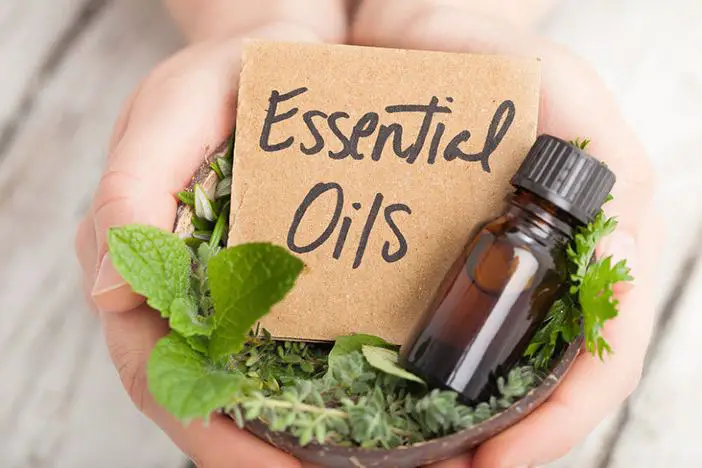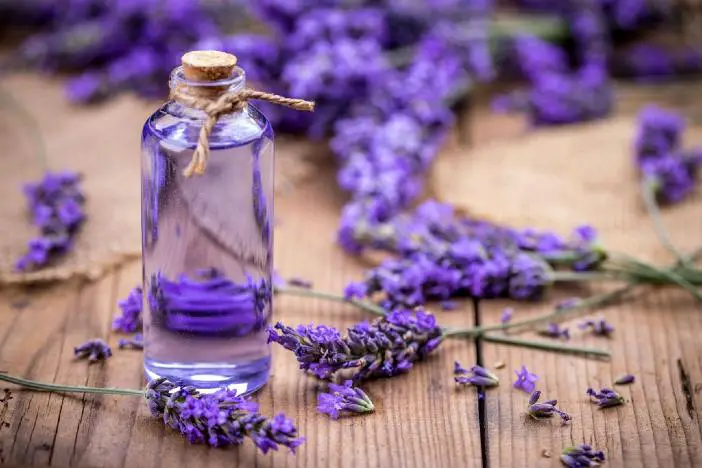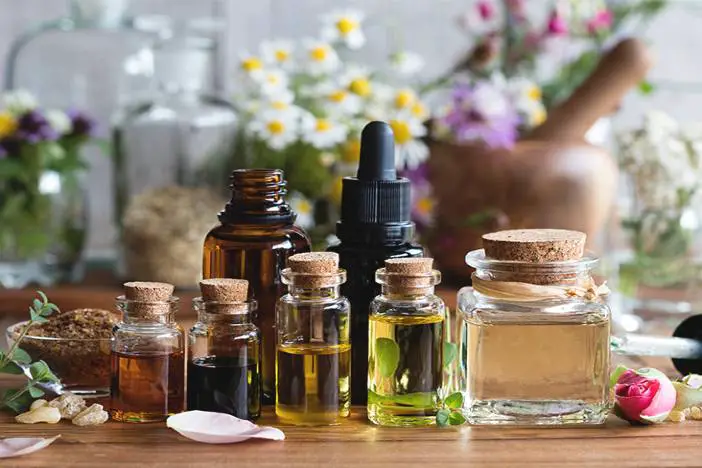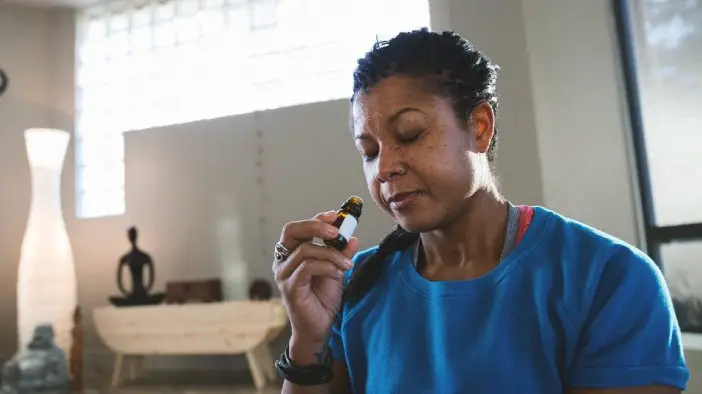The use of plants and herbs as a form of treatment and therapy has been long passed from generation to generation in some cultures. These forms have been transformed into more modern forms like capsules, serums, creams, liquids, powders, and many more. With modern changes, there are still natural ways to use these plants and herbs. Essential oils are one of the forms in which plant-based remedies come in.
The importance of plant-based remedies and treatments cannot be over-emphasized now that people know some of these remedies work more than their pharmaceutical counterparts. People are gradually shifting to natural plant-based remedies to treat some small ailments and also improve their overall health.
As mentioned earlier, one of the natural forms of these plant-based remedies is essential oils, which are excellent extract supplements that will not only boost a healthy lifestyle but also ensure optimal vitality of the body.
Uses of essential oils

The uses of essential oils are based on how they are taken. They can be ingested, inhaled, applied topically, and spread as pesticides.
1. Essential oils for aromatherapy
Essential oils can be used in a variety of ways and aromatherapy is one of them. Aromatherapy is the diffusion of essential oils into the air. This is the use of the powerful scent of essential oils to treat a certain therapeutic benefit.
The oils can be inhaled with the help of a stream diffuser, used for dry evaporation, sprayed as a perfume, or dropped on clothes, pillows, and sheets, as long as the oil is inhaled in some ways.
When inhaled, the evaporated oil travels through the nose, the olfactory nerves, and directly hits the amygdala, the emotional center of the brain. Essential oils for aromatherapy are mostly used for relaxing, inducing sleep, and alerting mental awareness.
Find out how to get the best perfume.
Some ideal usage of aromatherapy scents as treatments include;
- Mental stimulation and alertness – wild orange, lemongrass, grapefruit, and eucalyptus.
- For boosting moods; bergamot, geranium, peppermint, and lemon.
- For relaxation and anxiety relief; lavender, ylang-ylang, roman chamomile, and geranium.
- For sleep; frankincense, marjoram, vetviter, and neroli.
2. Essential oils for topical use
Essential oils can be used topically, which is applied directly to the skin. This could help treat pain in specific body parts, used for anti-inflammatory and antiseptic properties, and also healing properties.

There are various techniques in which these natural products can be applied to the skin. But it is important to note that essential oils are not to be applied directly to the skin, they need to be diluted with what is called carrier oils.
Dilution is the mixing of essential oils with other components like water and oils (vegetable oils, nut oil) to ensure the proper use of the oil in the right dosages, and most times the dilution of essential oils is 5% to the carrier oil.
There are no special ways of preparing the dilution, you just mix the right amount of the essential oil and the carrier oil together then you apply it to your body. After dilution, essential oils can be used for bathe, massaging, gargled, or as a compress.
Topical uses of essential oil
After the essential oil is mixed with the right carrier, it can be applied topically on the skin for therapeutic purposes. It could be to heal a blotch, relieve pain, strengthen the immune system, or just to smoothen the skin. There are different purposes for the topical use of essential oil or its blends. Some of them are:
Anti-fungal healing: The essential oils are used for common skin conditions like candida, ringworm, psoriasis, and staph. They are also excellent for curing dandruff, itching scalp, foot ailments, and skin cuts. Examples include:
- Tree tea
- Clove
- Lavender
- Spearmint
Dry skin issues: Essential oils can be topically used for cracked skin, eczema, and dermatitis. For instance, oils will soothe irritating skin and inflammations on parts of the body. They also provide moisture and healing for dry skin that is sensitive. Some examples include:
- Clary sage
- Lavender
- Frankincense
- Cedar wood
Anti-Aging properties: Some essential oils have properties that help fight the aging and free radicals on the skin. They also help to heal sun damages, wrinkles and help to maintain a youthful glow. When using the oils, make sure to use sunscreen to protect yourself if you are applying some of these oils on your skin because they are not photosensitive. Some examples include:
- Carrot seed
- Geranium
- Lemon
- Rose
Muscle and joint-relaxing: You can use the oils to soothe pain in the muscles and joints. Also, they are good for inflammations that come from ailments like arthritis, joint pain, muscle spasms, and general body stiffness. Some of these oils can irritate the skin, so you have to monitor how they are being used. Some examples include:
- Wintergreen
- Marjoram
- Chamomile
- Rosemary
3. Essential oils for ingestion
Essentials can be added in cooking or even swallowed as medication but in small doses. When ingesting the liquid, you should proceed with care and great caution because it can be poisonous in larger doses. So, when ingesting the oils, it must also be done under regulation and licensed supervision. It should also be diluted properly to ensure the safety of the user.

There are many types of essential oils that can be ingested, but some of they are:
- Alfalfa
- Allspice
- Basil
- Bay leaves
- Bergamot (bergamot orange)
- Bitter almond (free from prussic acid)
- Chamomile flowers,
- Cinnamon
- Geranium
- Jasmine
- Juniper
- Lavender
- Ylang-ylang
4. Essential oils for pesticide
Research has shown that some essential oils can be used for pest control. These essential oils are used to deter pests, especially arthropods and insects. The oils also repel, inhibit digestion, decreasing reproduction, stunt growth, or even cause the pests to die. Though, it has been revealed that the molecules that affect the pests are normally non-toxic to mammals.
This is why the essential oils are used as green pesticide alternatives to synthetic pesticides because they do not harm anything other than the pests. With this, it has ecological benefits such as decreased residual actions. And some oils used as pesticides include:
- Rose
- Lemongrass
- Thyme
- Peppermint
- Lavender
- Eucalyptus
Frequently Asked Questions
What are essential oils?

In its simplest definition, essential oils are concentrated extracts from different plants. They are the primary actives of various plants distilled into a strong form that can be used in various ways.
Essential oils are often recommended as natural alternatives to help boost your health. They mostly come in liquid forms and have a more accentuated scent than that of their natural plant source.
Essential oil can be extracted from different parts of a plant which includes the roots, stem, flowers, and fruits. Here the ‘essence’ of these parts is pressed or distilled to form the final liquid form, which is the oil. The color of the oil does not have universal shade, but rather it is determined by the type of plant, and the part of the plant extracted.
Benefits of essential oils

There are many outstanding benefits of essential oils, which is why they are popular today. It is said that the oils are good as natural remedies for a number of ailments, though enough research has not been carried out to back up this claim. But it has been highlighted that essential oils are best diluted before use due to their high concentration.
Also, essential oils work best when they are blended and mixed together. Some of the ailments and health conditions essential oils that can help cure include but not limited to the following:
- Anxiety
- Sore muscles
- Sinus infections
- Cold sores
- Depression
- Insomnia
- Headaches
- Constipation
- Low appetite
- Dry mouth
How is an essential oil extracted?
There are different ways in which essential oil is extracted from its plant source. These include:
Steam distillation
This is the most common way essential oils are extracted. The process involves the use of water or hot steam through the plants and pulling out the oil, leaving the water and plant matter behind. When the water is heated, the steam passes through the plant, vaporizing the volatile compounds of the material. The vapor then passes through a coil where they condense back to liquid in a collecting vessel.
Another wonderful thing about this process is that the recondensed water is called hydrosol or plant water essence and can be used for the skin or other purposes. Good examples of hydrosol are rose water and lavender water.
You can also steam your hair and get these benefits.
Carbon-dioxide distillation
This is the use of a solvent, carbon-dioxide, to separate the oil from the plant. Also, this method uses low heat and does not change the molecular structure of the plant. This distillation method ensures the high potency of the oil without destroying the structure and integrity of the plant.
The only disadvantage to this method is that it uses a solvent, which is not considered natural. But since this method does not pose a threat to the oil and users, it is acceptable.
Cold pressing
This method entails the use of a machine to mechanically press or squeeze the plant matter, causing it to release the juices and oils. The process is quite intensive but it yields high–quality results.
Side effects
There are certain side effects of using essential oils. Just because they are natural products does not mean they can have adverse effects on the users. For instance, they can cause irritating and burning effects. That is why they need to be diluted before use.
Also, essential oils can cause asthma attacks when they are inhaled by people with breathing problems. That is why you should use it in small quantities or avoid inhaling the oils directly. Though essential oils can help with headaches, they can also cause headaches if used too much by some people.
It has been noted that essential oils increase photosensitivity and risk the skin of getting sunburned. That is why sunscreens must be used when you are applying essential oils. Also do not place them close to the sensitive parts of the body like the eyes, genitals, or mucous membranes. And for ingestion, always make sure that the essential oil is FDA approved for ingestion.
Safety measures
Before or when using essential oils, make sure to follow these simple measures for using them.
- They should not be ingested if not approved by FDA.
- Make sure to dilute the oils before applying them topically on your skin.
- Do not use some oils if you are pregnant. Possible oils to avoid include oregano, clove aniseed, cinnamon, fennel, wintergreen, hyssop, and sage.
- Always store your oils in a cool dry place to prevent them from degrading.
- Buy the products in dark amber bottles with their Latin name of the plant written on them. This is because plastic contaminates the oil.
Conclusion
Plant-based remedies like essential oils are beneficial for many reasons because of their high concentration properties. They also keep the body protected and healthy because they relieve stresses and ailments. You just have to make sure to dilute it before use and use it in small quantities. So if you have not used essential oils today, you should try them and start getting the amazing results you want.
Loved this article? You can find more in the category here.







